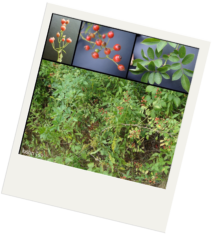
Other names: Multiflora rose, baby rose, Japanese rose, seven-sisters rose, rambler rose, wild rose, multiflowered rose, Rosa multiflora
Where did it come from?
Multiflora rose was imported from Eastern Asia in the late 1700s as an ornamental, in erosion control, and as a living fence.
Why is it invasive?
This bush forms dense strands that interfere with other woody species and replaces native plants on forest edges.
How do you prevent its spread?
Remove it from your property and plant native alternatives.
Resources:
Seen it? Report it! Through the app or online.
Image credit: Justin Tso